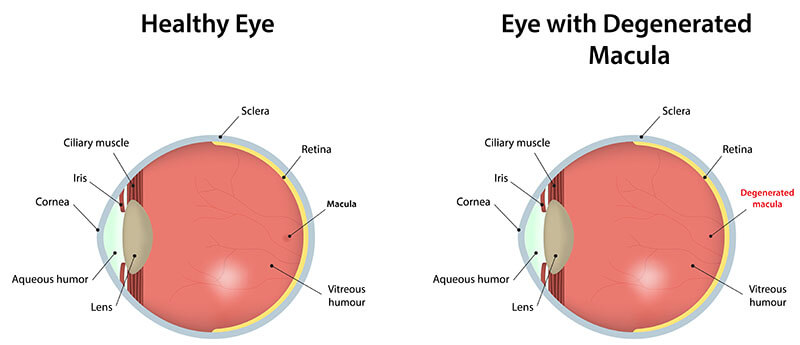Age-related macular degeneration is the breakdown or damage of the macula. The macula is a small area at the center of the retina in the back of the eye that allows you to see fine details clearly and perform activities such as reading and driving. In the wet form of AMD, abnormal blood vessels may grow in a layer beneath the retina, leaking fluid and blood and creating a large blind spot in the center of your vision.

Photodynamic therapy is an outpatient procedure involving the use of a special light-activated drug. The inactive form of the drug is usually injected into a vein in the arm, where it travels to and accumulates in abnormal blood vessels under the center of the macula. A special low-intensity laser light targeted at the retina activates the drug only in the affected area, damaging the abnormal blood vessels under the retina and leaving normal blood vessels intact. The benefit of PDT is that it reduces abnormal blood vessel leakage associated with wet AMD without damaging the retina.
PDT therapy is used for the treatment of abnormal new blood vessels under the center of the macula associated with AMD. However, it may not be indicated in all cases. PDT therapy is not effective for treatment of the dry form of AMD, frequently associated with aging and thinning of the tissues of the macula.
Photodynamic therapy may preserve and, in some cases, improve vision. Repeat treatments are usually needed for optimum results. Photodynamic therapy may be used to treat some patients with the wet form of AMD with fewer visual side effects than other treatments.
If the abnormal new blood vessels are not under the center of the macula, they may be treated with thermal laser surgery, using a focused beam of high-intensity light to seal the abnormal blood vessels. A small, permanent blind spot is left at the point of laser contact.
Patients who are treated with PDT will become temporarily sensitive to bright light (photosensitive). Care should be taken to avoid exposure of skin or eyes to direct sunlight or bright indoor light for five days. Patients who go outdoors in daylight during the first five days after treatment must protect all parts of their skin and their eyes by wearing sunglasses and protective clothing. UV sunscreens are not effective in protecting against photosensitivity reactions.
While photodynamic therapy may preserve and, in some cases, improve vision for many people, PDT may not stop vision loss in all patients. The abnormal blood vessels mey regrow or begin to leak again. Repeat examinations including a flourescein angiogram (the dye test) and OCT (high resolution scan of the retina) are required. Multiple PDT treatments may be necessary.
You’ll see that when it’s time to make an appointment with a specialist in Retina and Vitreous diseases, you can trust your eye health to the team at Inland Valley Retina Medical Associates, Inc.